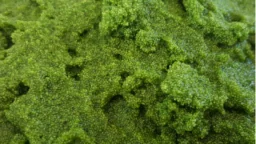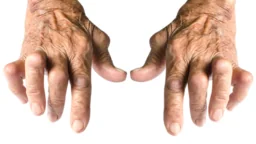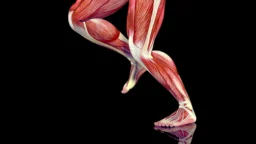February might be the shortest month, but it’s still full of exciting research on the path towards ending age-related diseases, including senolytics and new ways of looking at epigenetics. Let’s see what’s happened in these four weeks.
LEAF News
 Life Noggin Joins the Lifespan.io Family: Today, we are delighted to officially announce that the popular pop-sci Youtube channel, Life Noggin, has joined the Lifespan.io family. To celebrate the official launch, we are pleased to reveal a new episode of Life Noggin that focuses on some unexpected sources of life extension that we interact with every day.
Life Noggin Joins the Lifespan.io Family: Today, we are delighted to officially announce that the popular pop-sci Youtube channel, Life Noggin, has joined the Lifespan.io family. To celebrate the official launch, we are pleased to reveal a new episode of Life Noggin that focuses on some unexpected sources of life extension that we interact with every day.
EARD2021
Irina Conboy on Heterochronic Plasma at EARD2021: Irina Conboy discussed the effects of plasma dilution and heterochronic plasma exchange and their relationship to epigenetic alterations.
 Grey Fahy on the TRIIM-X Trial at EARD2021: Greg Fahy discussed TRIIM-X, the ongoing continuation of his original TRIIM trial on reversing thymic involution, along with some surprising findings from it.
Grey Fahy on the TRIIM-X Trial at EARD2021: Greg Fahy discussed TRIIM-X, the ongoing continuation of his original TRIIM trial on reversing thymic involution, along with some surprising findings from it.
Lifespan News
WIRED and Rejuvenation: For this episode of Lifespan News, Ryan O’Shea focuses on Morgan Levine’s promotion of rejuvenation biotechnology on WIRED. WIRED, a media company historically associated with their coverage of the digital revolution, has released a video on the science of slowing down aging with Dr. Morgan Levine.
Resveratrol Controversy: On this episode of Lifespan News, Ryan O’Shea focuses on a recent controversy involving David Sinclair and his work regarding the well-known supplement resveratrol.
Rejuvenation Roundup Podcast
Ryan O’Shea of Future Grind hosts this month’s podcast, showcasing the events and research discussed here.
Journal Club
CRISPR activation of Yamanaka Factors in Human Cells: Journal Club returned on February 22nd at 12 PM Eastern time / 5 PM UK and was broadcast live to our Facebook page. This month, Dr. Oliver Medvedik took a look at a new method of partial cellular reprogramming using the gene editing tool CRISPR.
Interviews
 Dr. Pankaj Kapahi: “AGEs are a Trillion-Dollar Industry”: Dr. Pankaj Kapahi is a veteran geroscientist. His laboratory at the famous Buck Institute for Research on Aging is among the few that study advanced glycation end products (AGEs) and the many ways in which they affect aging. Dr. Kapahi’s company, Juvify, produces GLYLO, a supplement for detoxifying AGEs that also reduces food cravings.
Dr. Pankaj Kapahi: “AGEs are a Trillion-Dollar Industry”: Dr. Pankaj Kapahi is a veteran geroscientist. His laboratory at the famous Buck Institute for Research on Aging is among the few that study advanced glycation end products (AGEs) and the many ways in which they affect aging. Dr. Kapahi’s company, Juvify, produces GLYLO, a supplement for detoxifying AGEs that also reduces food cravings.
Advocacy and Analysis
A Critique of Geroscience: Eric Le Bourg has published a thought-provoking paper in Biogerontology that offers a critique of geroscience. When people discuss the prospects of targeting the aging processes to prevent, halt, or even reverse age-related diseases, their beliefs often fall into two opposing categories: extreme optimism and extreme pessimism.
Research Roundup
 Senolytic Navitoclax Rescues Neurogenesis and Memory in Mice: Scientists have shown that clearing senescent neural precursor cells with the senolytic drug navitoclax reverses the age-related decline in neurogenesis and improves spatial memory in mice.
Senolytic Navitoclax Rescues Neurogenesis and Memory in Mice: Scientists have shown that clearing senescent neural precursor cells with the senolytic drug navitoclax reverses the age-related decline in neurogenesis and improves spatial memory in mice.
Brain Cell Types Respond Differently to Aging Interventions: A new preprint on bioRxiv shows how researchers have developed transcriptomic, cell type-specific aging clocks from the regenerative zones of mouse brains. While chronological age is straightforward, it doesn’t necessarily capture the underlying biology.
 Higher Diet Quality Is Linked to Reduced Epigenetic Aging: A study published in the American Journal of Clinical Nutrition examined the relationship between diet quality and epigenetic aging clocks. This study used data from the Framingham Heart Study Offspring Cohort.
Higher Diet Quality Is Linked to Reduced Epigenetic Aging: A study published in the American Journal of Clinical Nutrition examined the relationship between diet quality and epigenetic aging clocks. This study used data from the Framingham Heart Study Offspring Cohort.
Naked Mole Rats Age, but Not Like Other Mammals: A research paper published in Nature by Dr. Vadim Gladyshev and his team has investigated the epigenetic aging of the naked mole rat, an animal whose mortality rate does not appear to increase with age.
 Effective New Method of Cellular Reprogramming Proposed: Scientists have proposed a novel method of cellular reprogramming that is more predictable and effective than traditional methods. Cellular reprogramming is a hot topic in geroscience that is being pursued by many academics and companies, including major players such as Google’s Calico along with Altos Labs.
Effective New Method of Cellular Reprogramming Proposed: Scientists have proposed a novel method of cellular reprogramming that is more predictable and effective than traditional methods. Cellular reprogramming is a hot topic in geroscience that is being pursued by many academics and companies, including major players such as Google’s Calico along with Altos Labs.
Mapping the Gene Expression of Senescent Brain Cells: As explained in a paper published in GeroScience, researchers have used spatial transcriptomic analysis to show the inflammatory nodes that are caused by brain cells undergoing senescence.
 Longevity Allele Slows Immune and Cardiovascular Aging: In a new study, mice transduced with a longevity-associated variant (LAV) of the BPIFB4 gene showed less immunosenescence and healthier vasculature. Longevity-associated alleles prove that aging does not affect everyone equally. On average, centenarians and supercentenarians are more protected from age-related diseases than other people, and this protection is better explained by their genes than by their lifestyle choices.
Longevity Allele Slows Immune and Cardiovascular Aging: In a new study, mice transduced with a longevity-associated variant (LAV) of the BPIFB4 gene showed less immunosenescence and healthier vasculature. Longevity-associated alleles prove that aging does not affect everyone equally. On average, centenarians and supercentenarians are more protected from age-related diseases than other people, and this protection is better explained by their genes than by their lifestyle choices.
Senolytics for Cardiac Regeneration in Diabetics: Research published in Diabetes has implicated senescent cardiac stem cells as the link between diabetes and cardiovascular disease. Aging is a major risk factor for diabetes, and individuals with diabetes exhibit several characteristics of aging.
 A Polyphenol-Rich Diet Affects Age-Related Brain Atrophy: A preprint study originating from the DIRECT PLUS trial was recently released from the American Journal of Clinical Nutrition. This study has been accepted into the journal but has not yet been peer reviewed. It focused on a plant called Mankai, a strain of the Wolffia globosa duckweed.
A Polyphenol-Rich Diet Affects Age-Related Brain Atrophy: A preprint study originating from the DIRECT PLUS trial was recently released from the American Journal of Clinical Nutrition. This study has been accepted into the journal but has not yet been peer reviewed. It focused on a plant called Mankai, a strain of the Wolffia globosa duckweed.
Debunking Myths About Work Stress and Age Acceleration: A study published in Aging that studied the Northern Finland Birth Cohort of 1966 has found some interesting and counterintuitive results regarding work stress and accelerated epigenetic aging. Work stress is widely associated with premature death.
 New Partial Reprogramming Drastically Lowers Cellular Age: In a pre-print paper that has not yet been peer reviewed, a group of researchers presented a new highly efficient method of partial cellular reprogramming. Our cells age, and old cells differ from young ones in multiple ways, including gene expression, telomere length, and protein milieu, but old cells turn back into young cells in the embryonic state.
New Partial Reprogramming Drastically Lowers Cellular Age: In a pre-print paper that has not yet been peer reviewed, a group of researchers presented a new highly efficient method of partial cellular reprogramming. Our cells age, and old cells differ from young ones in multiple ways, including gene expression, telomere length, and protein milieu, but old cells turn back into young cells in the embryonic state.
Puerarin Shows Promise in Fighting COPD in Cells: Publishing in Aging, a team of researchers has discovered how puerarin, an extract of kudzu, ameliorates chronic obstructive pulmonary disorder (COPD) signs in cellular cultures by limiting mitophagy: the consumption of mitochondria by cells.
 New Treatment for Osteoarthritis Proposed: In a paper published in Nature Aging, a group of scientists outlines a previously unknown pathway that leads to osteoarthritis and describes a promising treatment. There are plenty of deadly age-related diseases, but arthritis is one that shortens our healthspan rather than lifespan.
New Treatment for Osteoarthritis Proposed: In a paper published in Nature Aging, a group of scientists outlines a previously unknown pathway that leads to osteoarthritis and describes a promising treatment. There are plenty of deadly age-related diseases, but arthritis is one that shortens our healthspan rather than lifespan.
Muscular Oxidative Capacity Predicts Mobility Decline: Researchers publishing in Aging Cell have shown a relationship between mitochondrial dysfunction and mobility decline in older adults. Since 1958, a team of researchers from the National Institute on Aging Intramural Research program has been conducting the Baltimore Longitudinal Study of Aging (BLSA).
 A Fresh Examination of Epigenetic Clocks: In a preprint published in bioRxiv, Morgan Levine and colleagues have identified and grouped 5,717 epigenetic CpG sites into 12 different modules, conducting an in-depth examination into how epigenetic clocks work.
A Fresh Examination of Epigenetic Clocks: In a preprint published in bioRxiv, Morgan Levine and colleagues have identified and grouped 5,717 epigenetic CpG sites into 12 different modules, conducting an in-depth examination into how epigenetic clocks work.
Caloric Restriction Promotes Rejuvenation in Human Trials: In a new paper, Yale scientists present encouraging data from an unprecedented human study of caloric restriction, a powerful anti-aging intervention. Despite all the might of today’s science, simple lifestyle choices are still the clearest option for living longer and healthier.
 A New Understanding of Telomere Attrition: In Nature Cell Biology, a team of researchers has presented a current review of telomeres and how they relate to aging, reflecting modern research into a decades-old topic.
A New Understanding of Telomere Attrition: In Nature Cell Biology, a team of researchers has presented a current review of telomeres and how they relate to aging, reflecting modern research into a decades-old topic.
NAD+ Levels Are Correlated with Physical Activity in Humans: In a study published in Nature Aging, a group of scientists has shown that NAD+ levels are correlated not only with age but with physical activity, with elder athletes rivaling normal young adults. Nicotinamide adenine dinucleotide (NAD) is as important as it is tiny.
 Urolithin A Affects Muscle and Mitochondria in Older Adults: A study published in the Journal of the American Medical Association has examined the dosage and safety of a urolithin A supplement. This study also examined urolithin A’s effect on muscle endurance and specific health biomarkers.
Urolithin A Affects Muscle and Mitochondria in Older Adults: A study published in the Journal of the American Medical Association has examined the dosage and safety of a urolithin A supplement. This study also examined urolithin A’s effect on muscle endurance and specific health biomarkers.
The Effects of Early Life Rapamycin Administration on Mice: A team of researchers, including Steve Horvath, Leonid Peshkin, and Vadim Gladyshev, has published a preprint on bioRxiv showing the effects of early administration of rapamycin over the lifespans of mice in a placebo-controlled experiment.
 Resveratrol Ameliorates Erectile Dysfunction in Old Rats: Scientists have shown that resveratrol rescues erectile function in aged rats, most probably by activating SIRT1, and that it can work in synergy with the existing erectile dysfunction treatment tadalafil. Resveratrol, a plant-derived chemical of the polyphenol family, was once considered one of the most promising anti-aging molecules.
Resveratrol Ameliorates Erectile Dysfunction in Old Rats: Scientists have shown that resveratrol rescues erectile function in aged rats, most probably by activating SIRT1, and that it can work in synergy with the existing erectile dysfunction treatment tadalafil. Resveratrol, a plant-derived chemical of the polyphenol family, was once considered one of the most promising anti-aging molecules.
Combining Epigenetic and Imaging Biomarkers: Cardiologists, epidemiologists, and other researchers publishing in Aging have discovered that epigenetic aging and brain scans can be combined to accurately predict cognitive decline. The ongoing CARDIA study, from which this paper gets its data, was started in 1985 to monitor coronary artery risk development in young adults.
Optimal dose and type of exercise to improve cognitive function in older adults: There was a non-linear, dose-response association between overall exercise and cognition. The researchers found no minimal threshold for the beneficial effect of exercise on cognition.
Resistance exercise as a treatment for sarcopenia: prescription and delivery: The researchers state that two exercise sessions per week, with a combination of upper- and lower-body exercises performed with a relatively high degree of effort for 1-3 sets of 6-12 repetitions, is appropriate as a treatment for sarcopenia.
MIB-626, an Oral Formulation of NMN, Increases Circulating NAD in Middle-aged and Older Adults: MIB-626 1000-mg once daily or twice daily regimens were safe and associated with substantial dose-related increases in blood NAD levels and its metabolome.
Effect of 12-Week Intake of Nicotinamide Mononucleotide on Sleep Quality, Fatigue, and Physical Performance in Older Japanese Adults: Overall, NMN intake in the afternoon effectively improved lower limb function and reduced drowsiness in older adults. These findings suggest the potential of NMN in preventing loss of physical performance and improving fatigue in older adults.
Senolysis induced by 25-hydroxycholesterol targets CRYAB in multiple cell types: 25HC represents a potential class of senolytics, which may be useful in combating diseases or physiologies in which cellular senescence is a key driver.
Pharmacological Depletion of Microglia Leads to a Dose-Dependent Reduction in Inflammation and Senescence in the Aged Murine Brain: These results indicate that increased and detrimental brain inflammation in aged murine brain can be impaired by selectively reducing the microglial cell population with PLX5622.
Mycobacterium vaccae immunization in rats ameliorates features of age-associated microglia activation in the amygdala and hippocampus: Elevated neuroinflammatory priming, as is observed due to aging, is mediated in part by microglia, the primary immunocompetent cell in the CNS. Microglia in the amygdala and hippocampus appear most responsive to the anti-inflammatory effects of M. vaccae immunization, protecting against some age-associated microglia morphological changes.
Caudovirales bacteriophages are associated with improved executive function and memory in flies, mice, and humans: Supplementation of the Drosophila diet with the 936 group of lactococcal Siphoviridae bacteriophages resulted in increased memory scores and upregulation of memory-involved brain genes. Thus, bacteriophages warrant consideration as novel actors in the microbiome-brain axis.
Differences in Cognitive Functioning in Two Birth Cohorts Born 20 Years Apart: Data from the Interdisciplinary Longitudinal Study of Ageing: After correcting for age, a group born in the early 1950s significantly outperformed a group born in the early 1930s in all domains except concentration and verbal fluency.
Clinical Trials Targeting Aging: This review mentions caloric restriction, NAD+, senolytics, mTOR, and exercise. The future of clinical trials targeting aging may be phase 2 and 3 studies with larger populations if safety and tolerability of investigated medication continues not to be a hurdle for further investigations.
Cellular reprogramming and the rise of rejuvenation biotech: The researchers focus on an often-asked question: Can the ‘young’ science of rejuvenation, currently mostly based on in vitro studies, drive a new biotech field toward clinical applications?
The selection force weakens with age because ageing evolves and not vice versa: The researchers of this mathematical paper attempt to explain in evolutionary terms why aging exists.
Evidence that dog ownership protects against the onset of disability in an older community-dwelling Japanese population: Dog ownership appears to protect against incident disability among older Japanese adults. Additional benefits are gained from ownership combined with regular exercise. Daily dog care may have an important role to play in health promotion and successful aging.
Cannabis Use and Resting State Functional Connectivity in the Aging Brain: These findings suggest that future studies should examine both the potential risks of cannabinoids, as well as a potential benefits, on cognition and brain health for older adults.





